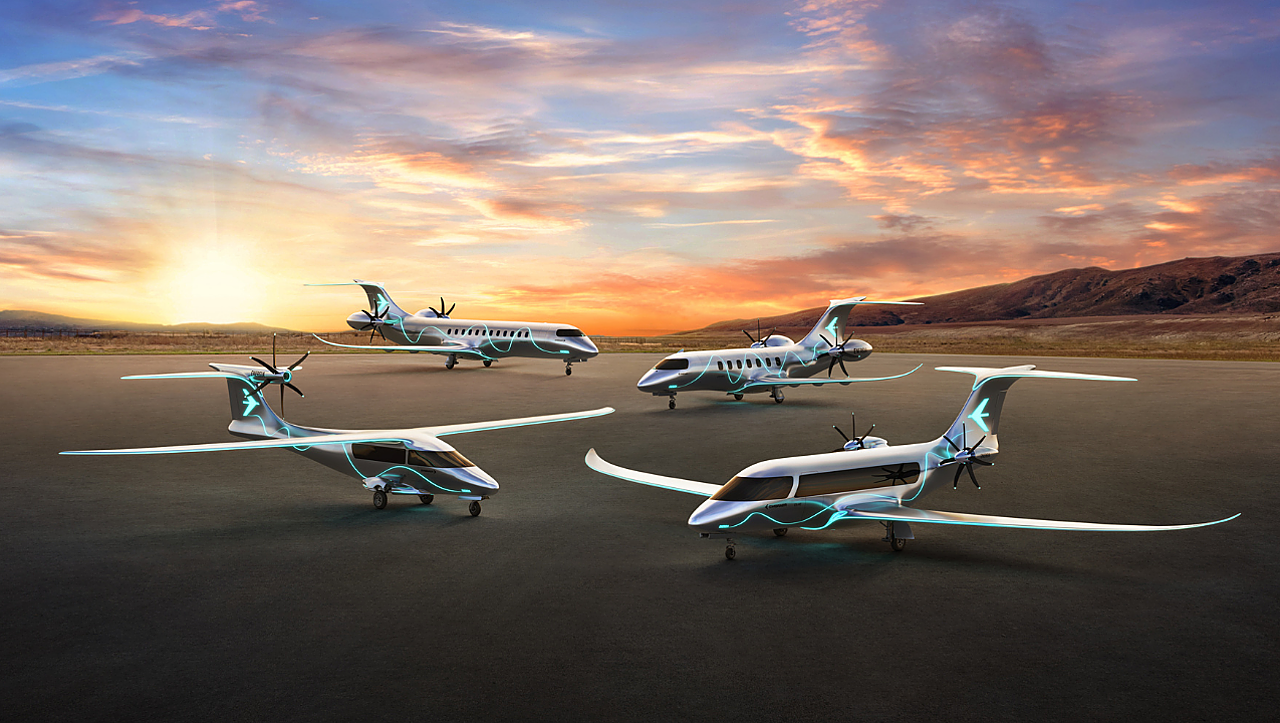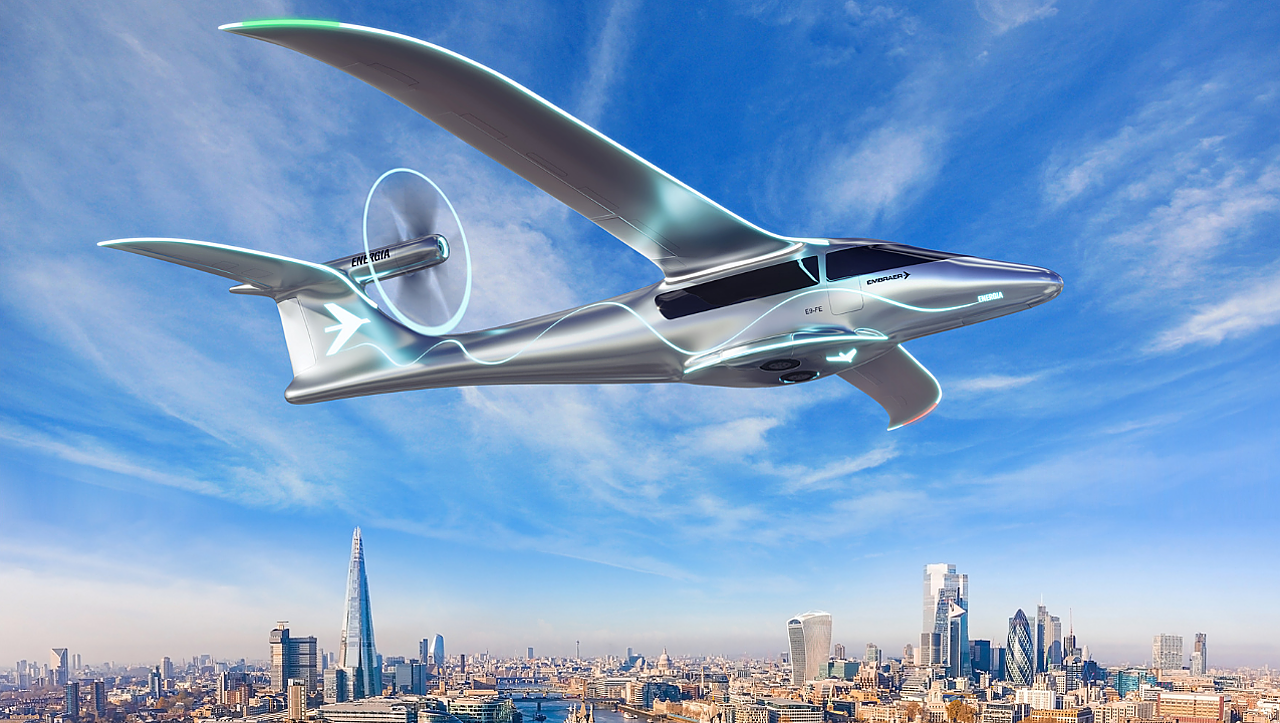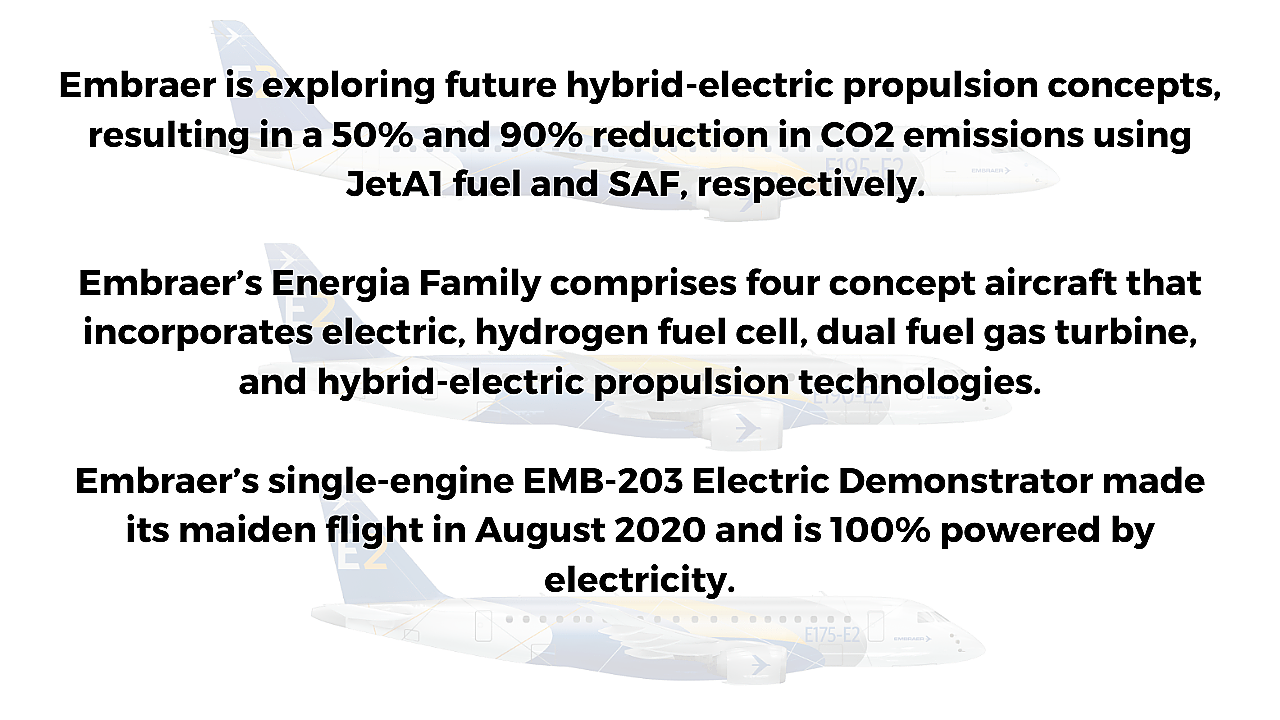
Brazilian airframer Embraer recently unveiled its Energia aircraft concept family, exploring a variety of energy sources, propulsion architectures, and airframe layouts to help it become net carbon neutral by 2050. Energia provides an insight into the future of aviation with a greater emphasis on the use of electric, hydrogen and Sustainable Aircraft Fuel (SAF) to contain CO2 and noise emissions.
Arjan Meijer, President and CEO, Embraer Commercial Aviation, said, “With 50 years’ experience in developing, certifying and supporting regional aircraft, Embraer is in a unique position to make viable the introduction of new disruptive green technologies.” Embraer remains the only manufacturer in the up to 150-seat segment to have the engineering capabilities and aerospace experience to design, develop, build, and certify new technologies.
Future Of Flight
Energia Family comprises four concept aircraft incorporating electric, hydrogen fuel cell, dual fuel gas turbine, and hybrid-electric propulsion technologies. These concepts, still on the drawing board, will be evaluated by Embraer for technical and commercial viability over this decade. The results will lead the company on the path for its future jetliners.
Luis Carlos Affonso, Sr. VP, Engineering, Technology and Corporate Strategy, Embraer, said that the airframer would initially refine the concepts to reduce emissions sooner than later. “Small aircraft are ideal on which to test and prove new propulsion technologies so that they can be scaled up to larger aircraft. That’s why our Energia family is such an important platform,” he said while adding, 'there’s no easy or single solution in getting to net zero. New technologies and their supporting infrastructure will come online over time.'

Energia Hybrid E9-HE and E50-H2GT are designed to deliver a range of approximately 925 km, with the former seating nine and the latter seating 35-50 passengers. The E9-HE, which is expected to be ready for commercial applications by 2030, will combine a mix of hybrid-electric propulsion, allowing it to maximise the benefits from thermal and electric engines synergies. It could deliver 50% less CO2 with the use of JetA1 fuel and 90% less CO2 with SAF, in addition to lowering external noise emissions by 60%.
The E50-H2GT appears to be more promising commercially; however, technological readiness is only expected by 2040. Embraer’s dual-fuel approach will allow the gas turbine powerplant to use SAF or Hydrogen as its fuel source. The modified gas turbine adapted to these new fuel sources can increase the range of passenger capacity (between 35-50 seats) and result in a 100% reduction in CO2 emissions with 60% lower noise emissions.
Hydrogen fuel cells can either run as a single power source or as a hybrid with gas turbines or batteries. The 19-seater E19-H2FC is slated to achieve technology readiness by 2035, and Embraer is working on high specific energy liquid hydrogen tanks for the aircraft concept. It will have rear-mounted electric engines with an optimised propellor design that could deliver a 70% reduction in noise emissions. Embraer’s Energia Electric E9-FE will feature full electric propulsion, and the 9-seater aircraft is expected to achieve technology readiness by 2035. The full-electric aircraft will feature tail-mounted contra-rotating propellors and is being designed for short-range missions. Its glider inspired aerodynamics will help it achieve a range of approximately 370 km. Embraer is currently developing higher capacity and longer-lasting batteries to meet the requirements of these programmes.
Embraer is also developing its single-engine EMB-203 Electric Demonstrator, which made its maiden flight in August 2020. In addition, Embraer’s first fully electric vertical take-off and landing vehicle, eVTOL, is being developed to enter service in 2026. It is also developing a new turboprop aircraft family to fly in the busy short-haul up to 150-seat segments. The new turboprop aircraft are being designed to reduce the aviation sector’s carbon emissions significantly. The new aircraft will be 100% compatible with SAF and is being developed to integrate with future hydrogen propulsion technologies.
Investing In Sustainability
Embraer has been investing in sustainable aviation technologies for over a decade now and has continued to make advances in reducing emissions from its existing aircraft and tested drop-in SAF, mixes of sugarcane and camelina plant-derived fuel and fossil fuel, on its family of E-Jets. As part of the Futprint50 open research project, which is an EU funded initiative focussing on energy storage, energy harvesting and thermal management, Embraer is working with an international consortium of universities, subject matter experts and organisations to accelerate the technologies needed to deliver a commercial hybrid-electric 50-seat aircraft in the next 20 years. Embraer is the only OEM to be involved in the project, which began in January 2020 and concludes in December 2022.

Embraer is also working with Twente University in the Netherlands to create semiconductors that can generate electricity via heat exchange. The company has acquired patents for these semiconductors, which can be placed at critical points around the aircraft, such as hydraulic fluid pipes, air-conditioning, and the fuselage where heat is generated. According to Embraer, one semiconductor can generate up to 22 watts of electricity, enough to power a single cabin entertainment system. Used in their entirety, these semiconductors could deliver a reduction in aircraft fuel consumption by up to 2%.
Embraer has partnered with Petrobras to study and test 100% SAF, reducing the overall carbon footprint of the fuel’s supply chain. The first flight with this fuel type is set to be on the E2 Profit Hunter single-aisle jetliner. Embraer’s E-Jet family started testing with SAF a decade ago, and it is targeting all its aircraft to be SAF compatible by 2030. The company also entered into a partnership with Brazilian academia in 2016 to assess pathways to produce aviation biofuels in Brazil. This study evaluated the use of different feedstocks (sugar crops, oil crops, and lignocellulosic biomass) for the co-production of biojet fuel and its attractive routes in this study were found to be Ethanol-to-Jet (ETJ) and Hydro-Processed Esters And Fatty Acids (HEFA).